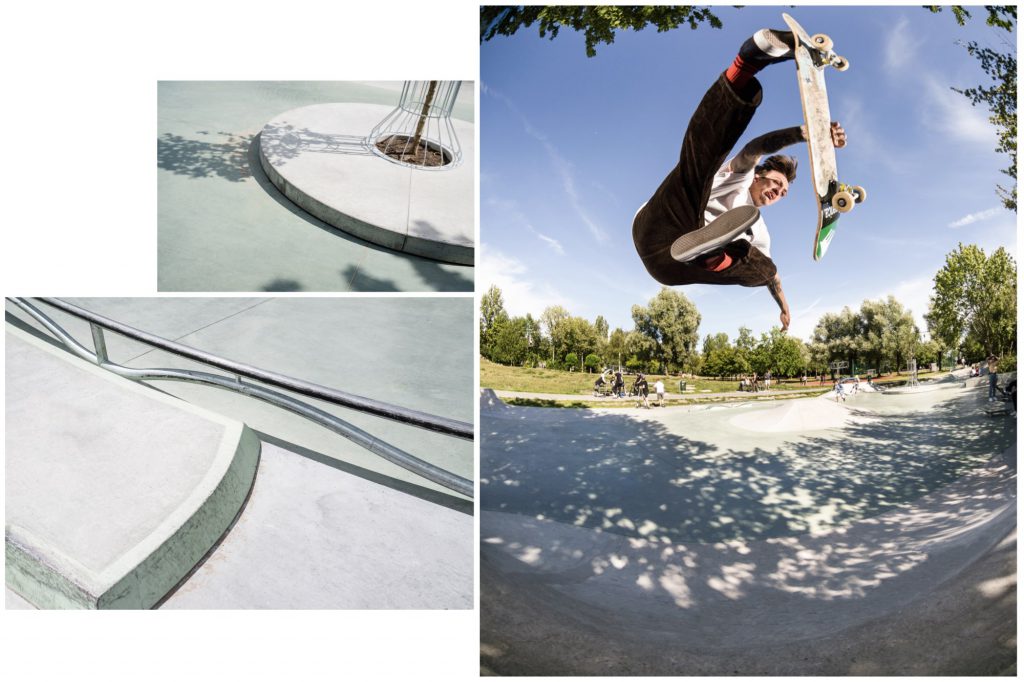The international magazine for sports facilities and recreational sites published by IAKS Sport hosted a guest article about the LNDSKT Project Skatepark Berlin Lichtenberg in its April 2020 issue. According to the overall topic of the issue, ‘Activating Urban Spaces’, the article details how LNDSKT incorporates socio-cultural aspects of skateboarding into the planning process for skateparks. In case of designing the Skatepark Berlin Lichtenberg, we brought in various elements from skateboarding’s DIY-culture. It is a practice that is endemic to global skateboarding, in which skaters resort to their own initiative to appropriate abandoned urban spaces in the city for their purposes. This aspect is exemplary of the self-directed, non-conformist nature of skateboard culture.
In many cases, skateboarders ‘adjust’ spots by adding self-poured concrete objects. They form small construction crews and, over the course of several construction phases, create their own rideable terrain in unutilized spaces such as overpasses, empty industrial lots, and anywhere that has somewhat rideable floor surface. Skateboarding’s DIY-culture also manifests in urban space by making illegal spots – often rendered unrideable by the addition of metal clamps or cracks in the surface – rideable again via slight cosmetic alterations.
At the Lichtenberg park, typical DIY-elements such as parking blocks or street barriers blend seamlessly into the flow of pathways through the skatepark. By incorporating these elements, the Skatepark Berlin Lichtenberg as an official, publicly sanctioned skatepark also addresses users from the often ignored (but highly influential) DIY-culture group. The group’s overall influence on the acceptance of skateparks in the scene cannot be overstated. It’s also worth mentioning that these small details, reflected in the choice of skatepark elements, are hardly visible to outside observers but make a vast difference for members of skating’s core scene as they enhance the personal identification with the park. What’s more, integrating DIY-elements into the layout also becomes more attractive to beginners all the while satisfying the demands of the scene’s most outspoken critics.
Discover the exact process by which elements from DIY-culture found their way into the course design of the Skatepark Berlin Lichtenberg. Also learn which additional local, spatial, and social factors played into the planning of the park in the article, available online via the Issuu platform.
